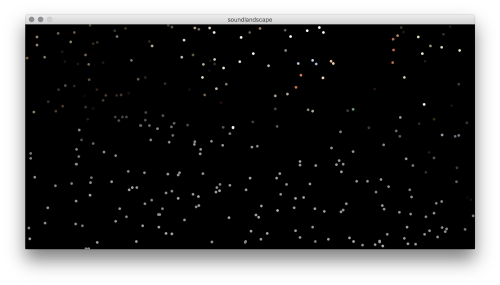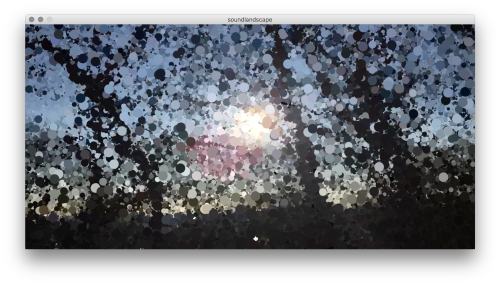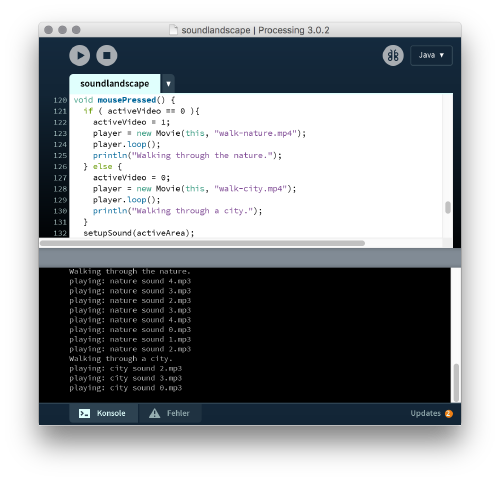SOUNDLANDSCAPE
Big cities are sometimes a bit overwhelming, if you are not suetus to them.
You are surrounded by a lot of different sounds, voices and noises, that you are not always able filter.
I want to compare the atmosphere of the city with the atmosphere of the nature.
So I’ve decided to create a soundlandscape for each of them.
For this idea, I had to pick some typical sounds for these both environments.
A few problems where emerging:
1. How to display sound in an interesting way?
2. How to also show the visual and not only the auditory atmosphere of each environment?
I’ve divided the sketch in five sound-areas, so I had to pick five sounds for each environment.
City sounds: the metro, the airport, a shopping mall and generally the city atmosphere
Nature sounds: the forest ambience with some birds, a river, wind, rain and walking through leaves
For illustrating the visual chaos of the city in opposite to the silence of the nature, I decided to record a video of each environment while a walk through it. My example for a city is Weimar (yeah, not that exciting metropolis but sometimes while last-minute-shopping also quite annoying) and for the nature, I went to the woods.
I tried to display the auditive chaos in the city by playing the sounds on both audio channels.
In the nature, you are mostly able to locate the direction of a sound and it’s calm.
So a few sounds are played on the left audio channel and the others are played on the right one.
For me, this feature captures the atmosphere much more.
The pixels of the videos are displayed as ellipses and their sizes are depending on the volume of the sound.
The louder the sound is, the bigger are the ellipses.
By hovering with the mouse over the sketch, you can switch between the audio-files.
Press the mouse and you can switch between the city-modus and the nature-modus.
While experimenting with some basic libraries in Processing, like Processing.sound.*, a mysterious bug always crashed my sketch either while hovering very fast over the areas or after I stopped the runmodus. It turned out, that this is a bug of the Processing sound library and so I’ve decided to use Minim for my project.
For visualizing the sizes of the ellipses a bit better,
I set the background colour in the setup function.
You can watch the related video here.
But I think the more attractive version is, to set the background colour in the draw function, because the ellipses of the previous sounds are still visible, but getting repainted.
You can watch the related video here.
Additionally I added an output, that describes which sound-number and video is currently playing, so you can examine in which environment you are.
So, ...
In the meeting, when we had to talk about our project ideas I only knew, that I want to create "something with pixel-sorting", but this was quite boring.
I liked the idea of the soundboard of the Ilmpark and so I combined pixel-sorting with sound in another way.
It was a really fun project and the idea was not too difficult, so I was able to handle it.
Try this sketch on your own.
Download the code on OpenProcessing and the zipped data folder here


